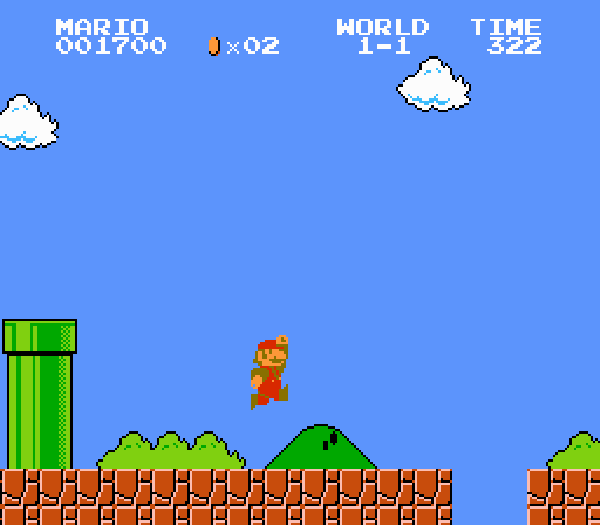Trending
Opinion: How will Project 2025 impact game developers?
The Heritage Foundation's manifesto for the possible next administration could do great harm to many, including large portions of the game development community.

Featured Blog | This community-written post highlights the best of what the game industry has to offer. Read more like it on the Game Developer Blogs or learn how to Submit Your Own Blog Post
The debate of 30fps vs. 60fps continues to pop up. What's more, the 60fps side keeps losing ground, often to the argument that humans can't really detect more than 30 frames in a single second. And that is completely untrue.

A while ago I was reading up on Starblade, one of the first commercial polygon-based games. What really struck me about the game was just how smooth it was compared to its spiritual successor, Starfox (granted the above links are YouTube videos that don't accurately reflect framerates, but the differences are still quite noticeable).
It's an extreme case, but one that nicely demonstrates the importance of rendering speeds.

smb
Despite having animations that consisted of only 2-3 frames, many classic games ran at 60fps. This granularity helped to smove out movement, including Mario's beloved jump.Of course no one ever complains about games being too smooth, but the debate of 30fps vs. 60fps continues to pop up. What's more, the 60fps side keeps losing ground, often to the argument that humans can't really detect more than 30 frames in a single second.
And that is completely untrue.
It's an inherently flawed statement as humans are not digital machines. The human brain is always on, always receiving input. Light hits our eyes as a wave, and the information it carries is almost instantly transmitted to the Visual Cortex. The brain analyzes this data, focusing on changes brought on by motion and fluctuations in intensity. Displacement is interpolated via motion blur and identical input is discarded to avoid extraneous processing.
The "decoded" image is further analyzed by various parts of the brain, but the overall process -- as complex as it is -- is quite fast and versatile. Much faster than 30fps. Faster than 60fps, in fact.
So where does the myth of 30fps come from? Well, film and TV for the most part, but the framerates of those media are not analogous to those of videogames. Others have written extensively about the topic, so I won't go too deep into it. What I'd like to talk about, though, is why high framerates are important to games.

unrealtournament3
The Unreal Tournament series has been known for letting its players set very high FPS benchmarks.As a preface, different titles obviously have different requirements, and some suffer more from a low FPS than others. Also, the reasons for Insomniac's decision to move away from their 60fps standard were completely understandable, if a little painful to accept.
With that said, here's why I think high framerates are important:
1). Granularity
The framerate of a game is usually directly tied to the processing of its logic. As a result, action games that run at 30fps cannot have the same granularity of movement as those that run at 60fps. This might not matter much for turn-based strategy titles, but it makes an awful lot of shmups technically impossible to do at lower framerates.
2). Input Lag
Games are inherently an interactive medium, and as such the response times for input need to be virtually instant. On the hardware side this is rarely an issue, but a stuttering framerate can reduce the response times and greatly detract from the overall experience (especially in "twitch" titles).
3). Consistency
30fps isn't bad, but what most people fail to realize is that it's often the "ceiling" measurement, i.e., the best case scenario. Unlike TV and film, games are dynamic, and the processing required to render any given scene can fluctuate quite significantly. As a result, 30fps games actually tend to run at a rate of 20-30fps. These sort of inconsistencies can be very difficult to avoid, but they're much less noticeable with higher benchmarks.

motionblur
Motion blur at its finest.4). Motion Blur
Motion blur is the biggest reason TV and film get away with smaller framerates. The phenomenon of motion blur relies on the human brain's ability to stitch together a series of blurred images into a single, smooth animation. Until fairly recently, games had absolutely no motion blurring, and even these days it doesn't have quite the same effect. The reason for this is that post-process blurring is not always accurate, and in many cases purposely exaggerated to create a distinctive visual effect.
To properly accommodate for all these factors, a high framerate is a must. And when it's there, it creates a certain synchronization between the player and the game; a smooth flow that more developers should strive to achieve.
Radek Koncewicz is the CEO and creative lead of Incubator Games, and also runs the game design blog Significant-Bits.
Read more about:
Featured BlogsYou May Also Like